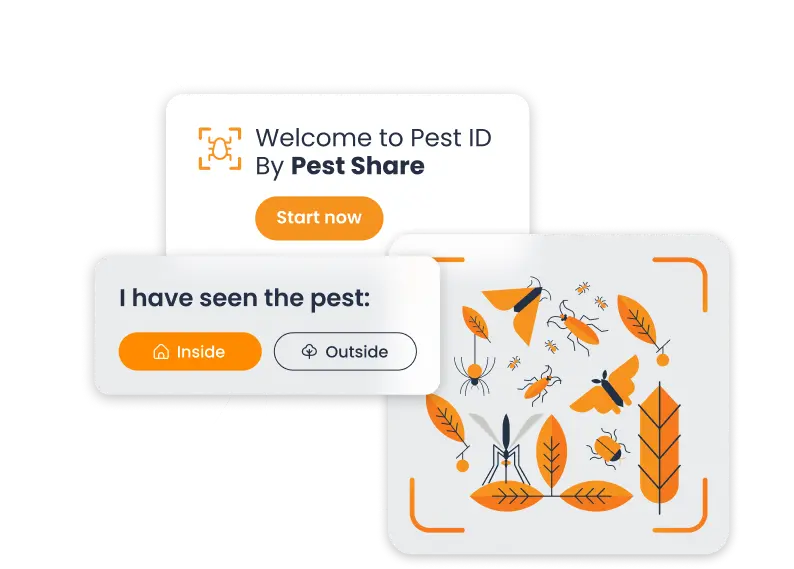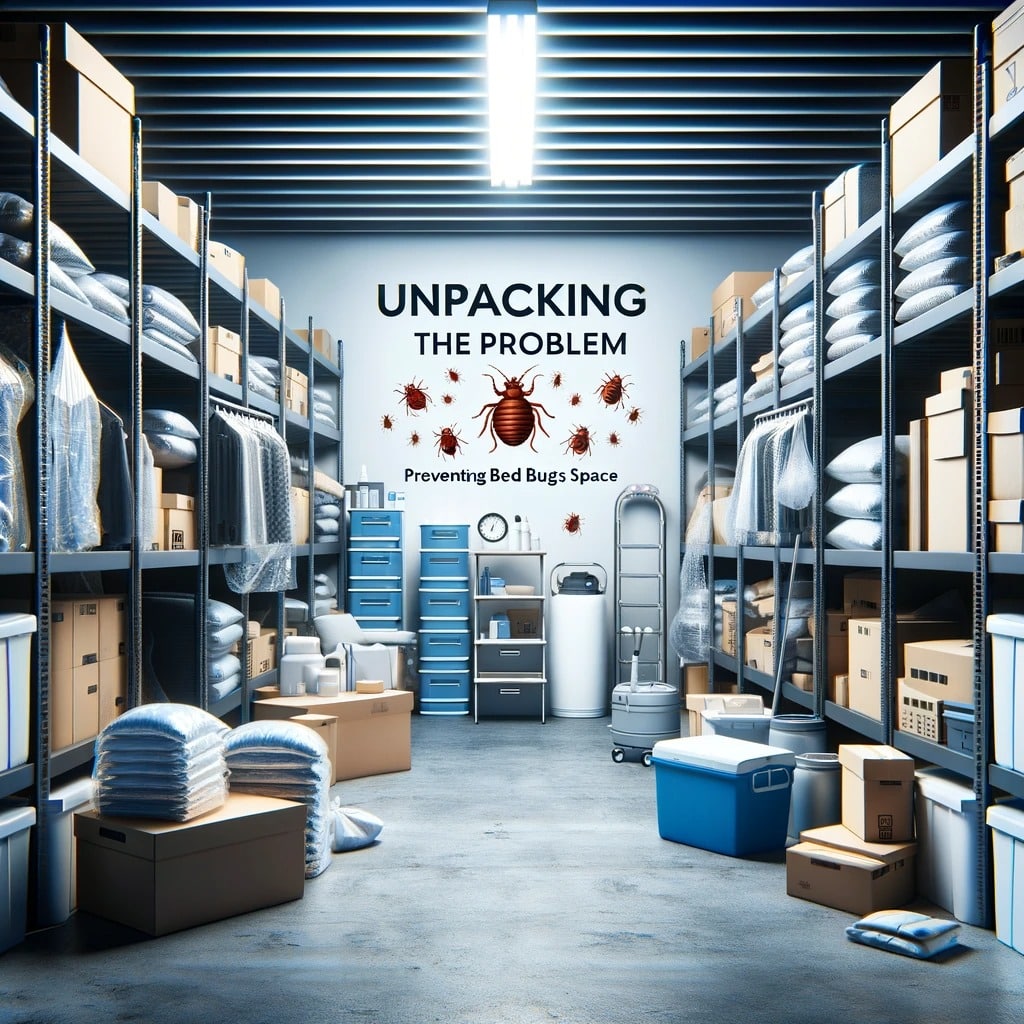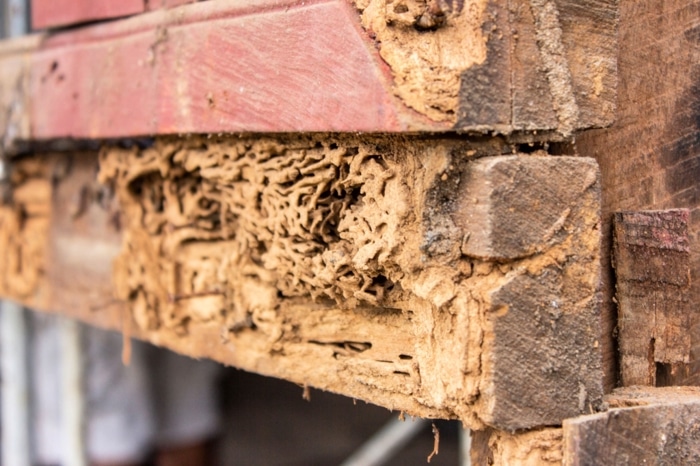Imagine you’re in the midst of a routine home cleaning when you suddenly spot an odd, tube-like structure running along the corner of your living room wall. Your initial bewilderment quickly turns to concern. Are these signs of an underlying pest issue? Recognizing and understanding these pest tubes is crucial for homeowners and property managers alike. Not only are these tubes unsightly, but they can also signify deeper problems that might require professional intervention. This guide delves into the world of pest tubes, uncovering what they are, why they’re a concern, and how to address them effectively.
Don’t let pests take over your home! Act now and schedule a professional pest control service to get rid of unwanted guests.
What is a Pest Tube?
Pest tubes, often mistaken for random dirt streaks or irregularities in the wall, are actually the work of certain pests, primarily termites. These tubes serve as protective highways from their nests to their food sources. Made from a combination of soil, wood, and saliva, these structures provide a moist and secure environment for pests to travel, feed, and breed.
The most common perpetrators behind these constructions are subterranean termites. Unlike other species, these termites require contact with the soil to maintain their moisture levels, making their tubes an essential part of their survival and colonisation strategy. These tubes can vary in size but typically appear as thin, mud-like lines running across exposed areas or hidden within the walls.
Recognizing pest tubes is a key step in early detection. They often emerge from the ground, moving up along foundations and into the wooden structures of a building. Inside, they might be found along baseboards, in corners, or even in more hidden spots like behind furniture or appliances. Homeowners should look for thin, pencil-like lines of dried mud, sometimes branching across walls or ceilings.

No More Resident Complaints.
Pest Tubes in Walls: A Closer Look
The presence of pest tubes within walls is a significant concern for homeowners and property managers. These tubes indicate that pests, such as termites, have infiltrated the building and are potentially causing structural damage. The problem with pest tubes in walls is that they often go unnoticed until substantial damage has been done.
Pest tubes in walls are particularly problematic because they provide a safe passage for termites and other pests to access different parts of a home. Termites use these tubes to move from their nests in the soil to the wood in your home, feeding on it and potentially compromising the structural integrity of the building. This stealthy movement makes it challenging to detect their presence until visible signs, such as sagging floors or hollow-sounding wood, become apparent.
Understanding the environmental conditions that encourage the formation of pest tubes is crucial. High humidity levels and moisture are significant factors. Leaky pipes, poor drainage, and inadequate ventilation create ideal conditions for termites to thrive and build their tubes. Homes with wooden structures touching the ground or with mulch and vegetation close to the foundation are particularly at risk.
Early detection of these tubes can prevent extensive damage. Homeowners should regularly inspect their homes for signs of pest tubes, especially in areas prone to moisture. Simple actions like ensuring proper ventilation, fixing leaks promptly, and maintaining a gap between wood structures and the ground can go a long way in preventing the formation of these pest highways.
Check out our post about pest control strategies every apartment manager should know.
Pest Control Tubes in the Walls
The concept of pest control tubes installed within walls has emerged as a revolutionary approach to managing and preventing pest infestations, especially termites. These tubes, discreetly integrated into the structure of a building, offer a proactive and continuous pest management solution. They consist of a network of small, perforated tubes that distribute pest control substances evenly within the walls. This method targets pests where they live and breed, providing a barrier that keeps them at bay.
Pest control tubes offer a significant advantage over traditional pest management methods. They allow for the distribution of pest control agents directly to areas where pests are active, without the need for invasive drilling or extensive property alterations. This not only makes them more effective but also less intrusive to homeowners. The controlled release of pesticides through these tubes ensures a more consistent and long-lasting pest management solution.
Another key benefit of pest control tubes is their safety and convenience. Since the pesticides are contained within the walls, there is minimal exposure to the residents, making it a safer option for homes with children and pets. Moreover, the system can be refilled and maintained by professionals like those at Pest Share, ensuring that the property remains protected against pests without regular homeowner intervention.
Wall Injection Pest Control: An Innovative Solution
Wall injection pest control takes the fight against pests directly to their hidden sanctuaries within walls. This method involves injecting pest control substances into the wall cavities, targeting the very heart of pest colonies. By focusing on these critical areas, wall injection pest control effectively disrupts the life cycle of pests, leading to a more thorough eradication.
This approach is particularly effective against pest tubes as it targets the pests in their most secure hideouts. The injected substances work to eliminate not only the visible tubes but also the pests lurking within the walls. This method ensures a comprehensive treatment, addressing both the symptoms (the tubes) and the root cause (the pests themselves).
The precision and effectiveness of wall injection pest control make it a preferred choice for dealing with severe or persistent infestations. While more intensive than surface treatments, its ability to reach deep-seated problems offers a more permanent solution to pest tubes in walls.
Identifying and Diagnosing Pest Tube Problems
The first step in addressing pest tubes is identifying their presence and understanding the extent of the infestation. Homeowners should conduct regular inspections, looking for signs like mud tubes along walls, hollow-sounding wood, and visible damage to wooden structures. It’s essential to check basements, attics, and crawl spaces, as these areas are often the first to be affected.
Once pest tubes are detected, it’s crucial to assess the severity of the infestation. Small, isolated tubes might indicate a recent or minor problem, while extensive networks of tubes could signify a longstanding infestation. The type of pests responsible for the tubes also plays a vital role in determining the appropriate treatment method.
For a comprehensive diagnosis, professional assessment is often necessary. Experts from Pest Share, for instance, can provide a thorough evaluation, using specialised tools and their expertise to gauge the infestation’s scope. They can also identify the specific pest species, which is crucial for effective treatment.
Professional Solutions: How Pest Share Can Help
When dealing with pest tubes, professional intervention often yields the best results. Pest Share’s approach to treating pest tubes combines advanced technology with expert knowledge. Their services include thorough inspections, identification of pest species, and tailored treatment plans that address both the immediate problem and its underlying causes.
Pest Share’s professionals are equipped to implement advanced solutions such as wall injection pest control, ensuring deep-reaching and long-lasting results. They also offer installation and maintenance of pest control tubes in the walls, providing a proactive defence against future infestations. Their expertise in handling various types of pests, including those that create pest tubes, ensures that the treatment is not only effective but also tailored to the specific needs of the property.
One of the key aspects of Pest Share’s service is their focus on integrated pest management (IPM). This approach involves a combination of physical, biological, and chemical strategies to control pests in the most effective and environmentally responsible way. By incorporating IPM, Pest Share ensures that pest control is not only about eradication but also about prevention and long-term management.
The use of advanced diagnostics tools by Pest Share allows for precise identification of infestation locations and extents. Thermal imaging, moisture metres, and acoustic detectors are some of the tools used to uncover hidden pest tubes and assess the severity of an infestation. This level of detail aids in crafting a more effective treatment plan.
Education and communication are also integral to Pest Share’s approach. They ensure that homeowners are informed about the nature of the infestation, the proposed treatment plan, and preventive measures to avoid future problems. This collaborative approach empowers homeowners, making them an active participant in maintaining a pest-free environment.
For property managers, Pest Share offers customised solutions that cater to the unique challenges of managing multiple units or larger properties. Their services extend to routine inspections and maintenance plans, ensuring that properties remain protected against the threat of pest tubes and other pest-related issues.
Overall, Pest Share’s combination of advanced technology, expert knowledge, and customer-centric approach makes them a reliable partner in addressing and preventing pest tube problems. Their comprehensive services offer peace of mind and ensure that homes and properties are safe, secure, and free from unwanted pests.
DIY vs Professional Pest Control for Pest Tubes
The dilemma between DIY and professional pest control is common among homeowners facing pest tube issues. While DIY methods might offer a temporary fix, they often fall short in addressing the root of the problem. Over-the-counter sprays and home remedies might seem cost-effective, but their effectiveness is usually limited to surface-level treatment, leaving the deeper infestation untouched.
Professional services, like those provided by Pest Share, bring a level of expertise and resources that DIY methods cannot match. Professionals can identify the specific species, understand the extent of the infestation, and apply treatments that reach deep into the walls where pests reside. The risk of misapplication or incorrect treatment is significantly reduced when experts are involved.
Furthermore, professional pest control services offer tailored solutions that consider the unique aspects of each property. This personalized approach ensures that the treatment is effective and sustainable, preventing future infestations and saving homeowners from repeated expenses and hassle.

Prevention Strategies: Keeping Pest Tubes at Bay
Preventing pest tubes from forming is key to long-term pest management. Regular inspections of the property can help in early detection of potential problems. Homeowners should pay attention to moisture control, as excess moisture is a primary attractant for pests. Ensuring good ventilation, fixing leaks promptly, and using dehumidifiers in damp areas can significantly reduce the risk of pest tubes.
Landscaping practices also play a crucial role in prevention. Keeping mulch, plants, and other organic materials away from the foundation of the house creates a less hospitable environment for pests. Regularly inspecting and maintaining the exterior of the property, including sealing cracks and crevices, further fortifies the home against pest invasions.
Pest Share’s preventive services can be a valuable asset in this regard. Their experts can provide regular inspections, identify potential risk areas, and recommend corrective actions to keep your home pest-free. Their preventive treatments, tailored to your home’s specific needs, offer an extra layer of protection against pest tubes and other pest-related issues.
Conclusion
Understanding and addressing pest tubes in your walls doesn’t have to be a daunting task. With the right knowledge and approach, you can protect your home from these hidden invaders. Remember, early detection and proactive measures are key to preventing significant damage. And when it comes to effective, long-lasting solutions, professional services like Pest Share are your best bet. Don’t let pest tubes compromise the comfort and safety of your home. Reach out to Pest Share for an expert assessment and tailored solutions that keep your home pest-free and your mind at ease.





